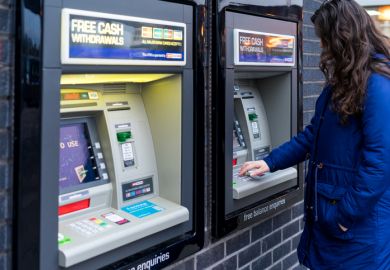The gap in university entry prospects between independent school pupils and their state school counterparts is growing, official statistics show.
Data published by the Department for Business, Innovation and Skills reveal that 85 per cent of English private school-leavers who turned 19 in 2012-13 were in higher education, compared with 66 per cent of state school students.
This gap of 19 percentage points is six points wider than it was in 2008-09, when 82 per cent of independent school-leavers were at university compared with 69 per cent of state school pupils.
The divide is even bigger when it comes to entry to the most selective universities, which 63 per cent of private school-leavers who turned 19 in 2012-13 were attending. Only 23 per cent of state school pupils were at such institutions: a gap of 40 percentage points.
In 2008-09, the gap was 37 percentage points, with entry rates of 62 per cent and 26 per cent for independent and state school pupils respectively.
Sally Hunt, the general secretary of the University and College Union, said the figures demonstrated that “for all the good work being undertaken by schools and universities, there is much more that needs to be done”.
“The government’s decision to axe student grants and allow fees to rise will do nothing to bolster the efforts of staff to try to encourage some groups of students to apply to university,” Ms Hunt said. “If we want to diversify the make-up of our campuses, we need policies that actively support students and set universities more challenging targets on widening participation.”
The BIS data do show a slight narrowing of the gap between the university entry prospects of pupils in England who are eligible for free school meals, and those who are not.
Twenty-three per cent of free school meal students who turned 19 in 2012-13 had entered higher education, compared with 40 per cent of pupils who did not have this status: a gap of 17 percentage points. In 2006-07, the gap stood at 19 percentage points.
There is widespread regional variation in the disadvantages faced by free school meal students in reaching university, with the biggest gap in southeast England (24 percentage points) and the smallest gap in inner London (8 percentage points). At local authority level, the biggest gaps are in Rutland (35 percentage points) and Warrington (34 points).
A BIS spokeswoman said that there were “record numbers of people from disadvantaged backgrounds going to university”.
“The latest Ucas data show young people from the most disadvantaged areas are a third more likely to enter higher education than they were five years ago,” she said.
Register to continue
Why register?
- Registration is free and only takes a moment
- Once registered, you can read 3 articles a month
- Sign up for our newsletter
Subscribe
Or subscribe for unlimited access to:
- Unlimited access to news, views, insights & reviews
- Digital editions
- Digital access to THE’s university and college rankings analysis
Already registered or a current subscriber?




